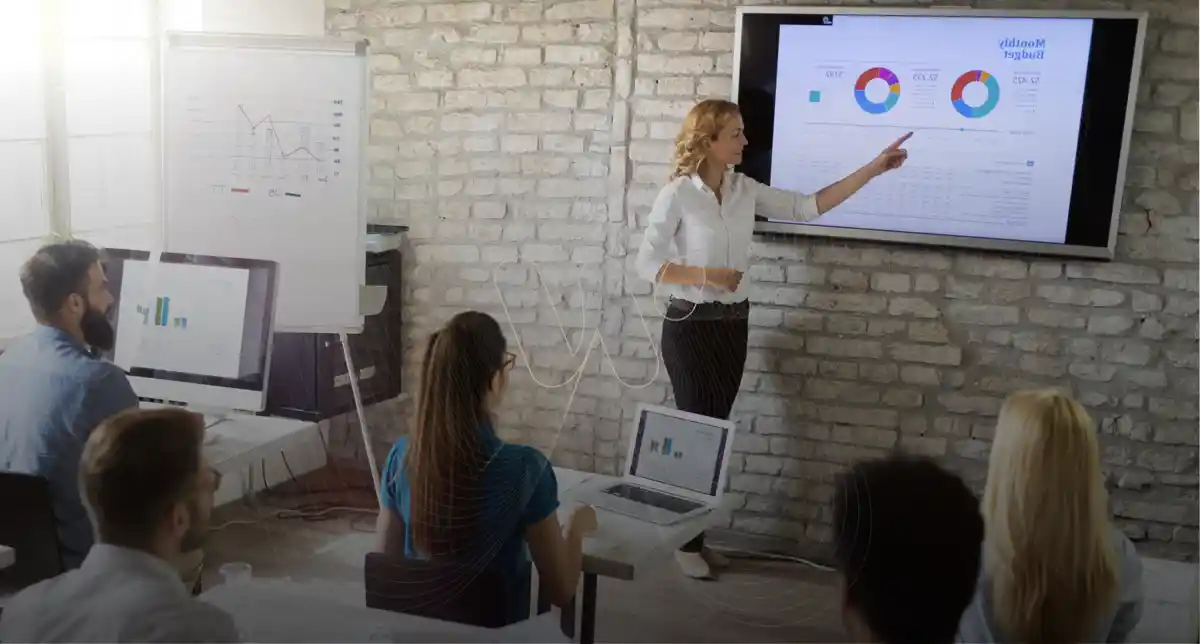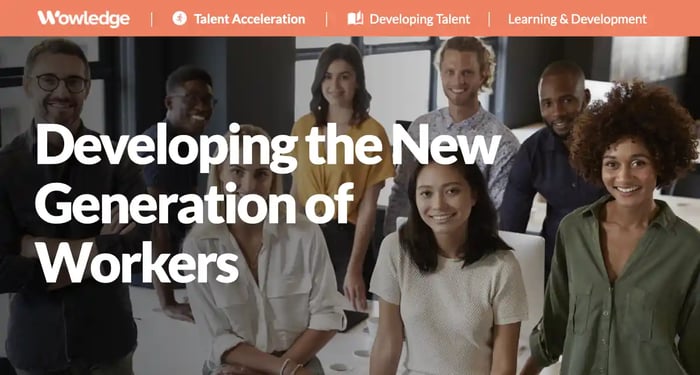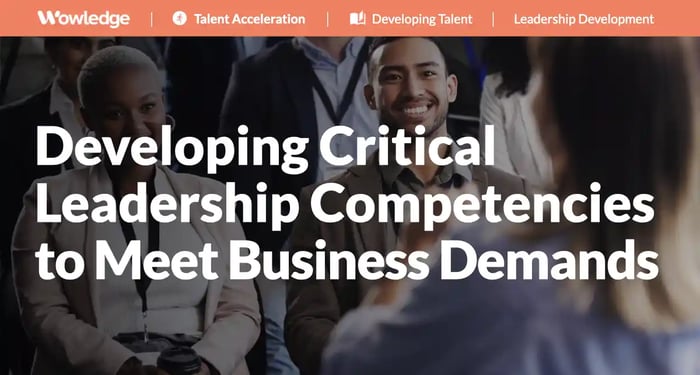Table of Contents
The Learning and Development (L&D) function has become a cornerstone of organizational success in today's dynamic and rapidly evolving workplace. With forces like technological innovation, shifting demographics, and changing skill requirements reshaping the nature of work, the evolving role of the Learning and Development professional has never been more crucial. These professionals, or teams, are responsible for bridging skill gaps and enhancing employee capabilities while fostering a culture of continuous learning and adaptability within the workforce. Their role is core to the building of a highly effective HR team that is able to drive sustained business impact.
In an era marked by remote work, automation, and global connectivity, modern L&D professionals must possess a diverse skill set beyond traditional training methods. They need to be strategic thinkers, adept at leveraging technology, and sensitive to the evolving needs of a multigenerational, diverse workforce. To thrive in this transformative landscape, L&D professionals must be proactive, data-driven, and capable of aligning their initiatives with the organization's broader strategic goals. In this context, the role of the L&D function is not merely supportive but instrumental in driving innovation, talent development, and long-term competitiveness for modern businesses.
The business challenges that L&D professionals need to address
L&D professionals play a vital role in helping organizations overcome various business challenges. As businesses evolve, external pressures (macroeconomics, climate change, talent shortages, sociopolitical trends) impact achieving their goals and objectives. Some of the critical operating challenges that need to be addressed and also influence the evolving role of the Learning and Development professional include:
1. Skill gaps and employee competency
Identifying and addressing employee skill gaps is a fundamental challenge. L&D professionals must ensure employees possess the necessary skills and knowledge to perform their roles effectively. This most basic requirement is impacted by the increasing adoption of new technologies such as AI, machine learning, and robotization, leading to rapid alteration and obsolescence of required job skills.
2. Employee engagement and retention
With significant labor shortages and employee quit rates, creating engaging and relevant learning experiences has been shown to improve employee engagement and reduce turnover. L&D must design programs that contribute to job satisfaction and career development.
3. Leadership development
Developing influential and effective leaders is crucial for an organization's success, particularly with the generational shifts in the global workforce. Skill development is changing as these new generations bring different strengths, expectations, and work style preferences to the workplace. L&D professionals must identify and nurture leadership potential and update management standards and models.
4. Remote work and virtual learning
The shift to remote and hybrid work and virtual learning environments, accelerated by events related to global health issues, environmental disasters, and employee preferences, requires L&D professionals to adapt training programs to remote delivery methods and ensure they remain effective.
5. Measuring effectiveness
The range of learning options has expanded exponentially. With leadership's desire to understand the impact and cost/effectiveness of new technologies and delivery methods, it is becoming increasingly important to measure the impact of training on business outcomes. L&D professionals must use data and analytics to assess the ROI of training initiatives.
6. Multigenerational workforces
In many organizations, multiple generations work together, each with different learning preferences and needs. With new generations having grown up as “digital natives” and older generations remaining in the workforce longer, L&D professionals must design programs that cater to these diverse groups.
7. Globalization and cultural sensitivity
In global organizations, L&D professionals must consider cultural differences and adapt training materials to ensure they are culturally sensitive, appropriate, and effective across different regions. More than straight language translations of learning materials are required.
8. Knowledge transfer and succession planning
With the unprecedented wave of boomer and GenX retirements, those experienced employees are leaving the organization, driving a need to capture and transfer their knowledge to younger generations. L&D professionals can play a role in facilitating this process through knowledge management strategies/systems, mentoring, and knowledge-sharing initiatives.
9. Psychological safety and well-being
Promoting psychological safety and employee well-being is increasingly important. The propensity and increased likelihood for burnout and negative responses to stress are emerging as a generational issue with younger employees. As such, L&D can contribute by offering training on topics like mental health, diversity, equity, and inclusion.

The critical elements of the Learning and Development professional role
The L&D professional leverages essential capabilities to help organizations build and enhance their employees' knowledge, skills, and abilities. At its most basic functionality, it requires attention to core capabilities.
- Needs assessment. Involves identifying the specific learning and development needs of the organization, teams, and employees. This includes reviewing strategic and workforce planning assessments, conducting surveys and interviews, and analyzing performance data to determine training gaps.
- Curriculum development. Designing and developing training programs, courses, and materials aligned with identified learning needs and creating engaging, relevant, and effective content for the target audience.
- Training delivery. Facilitating training sessions through various delivery methods, such as in-person workshops, virtual classrooms, e-learning platforms, or blended learning approaches and ensuring that training sessions are interactive, engaging, and conducive to learning.
- Managing learning technologies. Managing and leveraging learning management or experience systems or other educational technologies to design, develop, curate, store, deliver, administer, and track training programs.
- Evaluation and assessment. Measuring the effectiveness of training programs through evaluation methods like post-training assessments/knowledge or skill tests, feedback surveys, and performance metrics. This includes analyzing data to make improvements to training content and methods.
- Individual development planning. Providing learning pathways, certification programs, integrated learning and development programming, guidance, and structured approaches to managers and employees related to creating individual development plans that align with career goals and organizational objectives.
- Leadership and management development. Creating processes and assessment vehicles to identify high-potential employees, creating career development pathways, and designing and implementing leadership development programs to groom future leaders.
- Communication, promotion, and collaboration. Effectively communicating the offerings and value of L&D initiatives to all levels of the organization and collaborating with HR, managers, and subject matter experts to align training with organizational goals.
- Budget Management. Managing the budget for training and development initiatives, including the cost-effective balancing of “build” vs. “buy” decision-making related to purchasing content libraries, technologies, or outsourcing design and delivery.
- Cultural Alignment. Ensuring the alignment of L&D initiatives with the organization's culture, values, and strategic objectives. This more broadly encompasses the building, championing, and fostering of a learning culture within the organization.
Successful Learning and Development professionals possess instructional design skills, communication skills, a deep understanding of organizational goals, and the ability to adapt to evolving workplace needs. They play a crucial role in driving employee growth and organizational success. However, the role of the L&D professional is evolving in response to the rapidly changing environment in which the function and business world operate.

The Changing Role of the L&D Professional
The requirements of the Learning and Development function have undergone a profound transformation in response to the ever-changing landscape of business and talent challenges. No longer confined to traditional training and education, the evolving role of the Learning and Development professional requires that they operate as strategic partners in addressing a wide range of complex issues. From addressing skill gaps and fostering employee engagement to navigating the demands of a globalized and digitally transformed workplace, L&D professionals are at the forefront of shaping organizational success. They are expected to be agile, tech-savvy, and attuned to the diverse needs of a multigenerational workforce. Moreover, they play a critical role in shaping workplace culture, promoting continuous learning, and ensuring compliance with regulatory requirements. The modern L&D professional is a multifaceted problem-solver equipped to meet the dynamic and multifaceted challenges businesses face in the 21st century.
1. Proactive Talent Developer
The modern L&D professional has become, first and foremost, a proactive developer of talent who operates with the long-term needs of the organization in mind. The days of reacting to requests for training to resolve performance issues are long gone. Instead, today’s L&D professionals must operate planful, strategically, and business-focused, looking into the future to anticipate business needs and resulting talent challenges.
2. Curator and Integrator
With the explosion of digital media and learning technologies, millions of learning objects (small chunks of educational or instructional content) are now available through commercial and personal (e.g., social media) platforms. Sorting through such a vast array of content (e.g., short videos, articles, or podcasts) requires a curator who understands the learning needs of the population and can pull together the most valuable of those assets and combine them into a coherent and logical flow. The evolving role of the L&D professional requires curating content related to a given topic and repurposing it as a packaged learning solution that is easily consumed and digested.
3. Agile Creator
The rate of change in business needs, technologies, and skills obsolescence is increasingly driving the need for rapid solution identification and fielding. Where the classic process for content requirements determination, development, and offering used to be a months-long affair, the need to develop responsive solutions quickly has become paramount. As employees (and leaders) are now used to a “consumerized” experience with immediate access to information, insights, and learning content at their fingertips, their expectations must be met by leveraging rapid prototyping, testing, and fielding with continuous improvement and iteration tactics used to refine materials.
4. Learner Experience (LX) Expert and Advocate
Ensuring that learning content and delivery impact employees' knowledge and skill acquisition requirements calls for engaging them in its development. The key is leveraging design thinking to engage learners in the development cycle, focusing on meeting learners’ needs, preferences, and behavioral tendencies. This involves continuously collecting user feedback and learner behavioral data to create and then update the learning experience to optimize the impact and business value of the programming. A critical element of the L&D professional position is creating and curating individual learner-tailored or personalized options. This can be supported by using intelligent technologies that exploit data collected from skills assessments, learning program completions, career path trends, and the like to identify learning and growth patterns that can be used to advance skill acquisition and career advancement pathways.
5. Technology Partner
Contemporary L&D professionals use technology to design and deliver learning and skill development to the employee base efficiently and effectively. They leverage authoring and program development platforms (LCMS, LRS), content libraries, adaptive/personalized learning, learning delivery platforms (LMS, LXP), and collaboration platforms to create, store, and deliver employee education and development. They coordinate with IT experts to provide access to emerging technologies such as augmented and virtual reality (AR/VR) for targeted and specialized learning. The evolving role of the L&D professional calls for the use of artificial intelligence-related technologies and system capabilities to identify and track employee skill and knowledge acquisition patterns linked to successful development and advancement opportunities.
6. Program Manager
With a robust understanding of adult learning and skills acquisition, today’s learning professionals create development processes and programs to deliver formal, informal, and blended learning for targeted employee segments. These include a lowered reliance on classroom training and increased use/integration of on-the-job (duty or role rotations, special projects), embedded (job aids, augmented reality), directed development (structured coaching, mentoring, collaborative learning), and packaged learning and skill building (certifications, boot camps). Such programming requires project and program management skills to orchestrate their development and delivery.
7. Strategist
The call for HR professionals to think, plan, and act with business goals and a future focus in mind is equally essential for contemporary L&D. Leading-edge L&D specialists work with corporate strategists, HRBP’s, workforce planning (WFP) experts, and HR Analytics team members to identify skills gaps and future capability requirements that can be addressed by learning and development interventions. They build business cases and plans for future adoption of new technologies, approaches, and learning and development interventions that will address emerging talent needs on a global/organization-wide scale.
8. Business Partner
Impactful L&D requires a knowledge of the business and engagement with business and HR leaders alike to understand individual, team, and enterprise-wide staffing and skill requirements. This calls for working with business leaders and managers to identify performance shortcomings and develop appropriate and responsive learning, organizational development, and change management solutions tailored to the individual, team, or enterprise level. As a business partner, this involves the practice of performance consulting by using various data collection and analysis techniques to identify the root cause of a performance or skill issue and then design a responsive solution that addresses the business or talent challenge.
9. Analytic Consumer and Decision-maker
The widespread use of digital resources to design, deliver, and evaluate today’s learning creates the accessibility of learning process and outcome data. With the increased availability of analytic capabilities in learning technology platforms, there exists an opportunity for learning professionals to use those resources for insights into learner behavior and knowledge attainment. These systems offer valuable insights into learner demographics, preferences, topic consumption, knowledge and skill acquisition, and skill and knowledge gaps (when knowledge/skill testing is integrated into the learning or certification program).
L&D skills required for advanced organizations
To compete for roles in the most advanced organizations, Learning and Development (L&D) professionals should cultivate a diverse set of skills and competencies. First and foremost, a deep understanding of instructional design principles and adult learning theories is essential for creating compelling and engaging training programs. Proficiency in learning technologies and familiarity with learning management systems (LMS) and related platform types (LXP, LCMS, LRS) are vital in the digital age. Data analytics and the ability to measure the impact of training on business outcomes through metrics and key performance indicators (KPIs) are highly prized skills.
Moreover, strong communication and interpersonal skills are crucial, as L&D professionals must collaborate effectively with various stakeholders, including subject matter experts, managers, and employees. Strategic thinking and aligning L&D initiatives with overarching organizational goals are indispensable, enabling professionals to make a meaningful impact on the bottom line.
Adaptability is another key attribute as the L&D landscape continually evolves. Keeping abreast of emerging technologies and trends and staying flexible in response to changing business needs is critical. Cultural sensitivity and the capacity to design inclusive and diverse training programs that cater to a global workforce are increasingly important.
Leadership and project management skills can also set L&D professionals apart, especially if they are responsible for large-scale training initiatives or leading instructional designers and trainers teams. Expertise in coaching and mentoring strategies are essential elements of managing relationships and overseeing various informal development programs. Finally, empathy, patience, and providing constructive feedback are invaluable when nurturing employee growth and development. In essence, the most advanced organizations seek L&D professionals who are versatile, tech-savvy, data-driven, and capable of bridging the gap between learning and business outcomes in a rapidly evolving work environment.
Relevant Practices & Tools
Core Learning and Development Practices to Effectively Build Relevant Employee Skills, Knowledge, and Abilities. >
Creating and building a Learning and Development (“L&D”) capability or function ensures the acquisition of skills needed by employees to perform their duties... more »
Creating a Learning Culture that Supports Career-long Education and Development. >
A learning culture is one that encourages and supports employees’ continuous pursuit of knowledge, sharing of learning with others, and motivation to continuously upgrade... more »
Deploying Technology to Enhance Learning Delivery and Management Efficacies. >
Creating, managing, delivering, and curating learning content at scale typically requires technology solution(s). The range of solutions is vast and expands every year... more »
Developing Leaders Across Multiple Levels of Management. >
Advanced leadership development is designed to not only develop current executives, but "leaders" in all levels of the organization. While development programs and offerings will differ... more »
The Performance Consulting Assessment Tool: Uncover Workforce Challenges and Supporting Data for Learning and Development Solutions. >
The Performance Consulting Assessment Tool documents conversation(s) with functional managers who are facing specific workforce challenges that the learning & development team... more »
FAQs
How should an L&D leader decide when to build content in-house versus buying from external providers?
A practical decision framework weighs strategic relevance, urgency, scale, market availability, and total cost of ownership. Content closely tied to proprietary processes or competitive advantage typically merits in-house design, while generic or fast-changing topics favor licensed libraries. Time-to-value and expected shelf life should guide choices, with pilots used to validate learner demand before major spending. Vendor terms, update cadence and frequency, and integration effort must be factored into the full lifecycle cost.
What is the most effective way to secure senior leader sponsorship for learning at scale?
Executive sponsorship improves when development is positioned as a lever for strategic execution rather than a catalog of courses. Brief, outcome-focused business cases that quantify operational risk and define success metrics help leaders commit. Visible leader participation in championing and teaching classes and a regular review of impact dashboards sustain attention. Embedding development goals (for themselves and their subordinate teams) into leader scorecards locks in ongoing accountability.
What guardrails are needed to use AI responsibly in learning design and delivery?
Responsible use begins with transparency about AI-generated content, routine bias testing, and human-in-the-loop review for high-stakes topics, especially those pertaining to content and learning path recommendations. Minimizing the collection of personally identifiable information (PII) and using role-based access control protects learner privacy, while clear opt-out options respect individual employee preferences. Standardized prompt libraries and style guides help maintain accuracy and consistency in tone. Periodic audits should evaluate outcomes for unintended effects on different learner groups.
What capabilities should managers develop to act as effective learning multipliers?
Managers amplify impact when skilled in coaching, feedback, and creating space for deliberate practice during real work. Goal alignment, observation techniques, and simple reinforcement routines convert training into behavior change. Comfort with data helps managers track progress and remove blockers quickly. Modeling continuous learning signals expectations and normalizes development within team routines.










